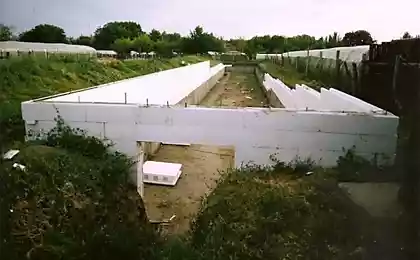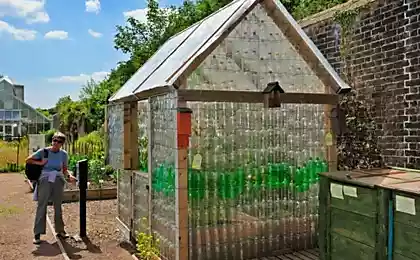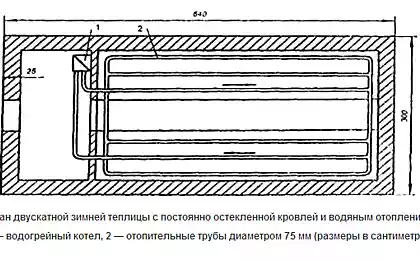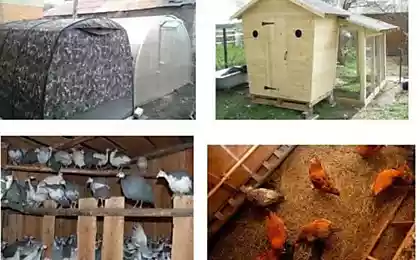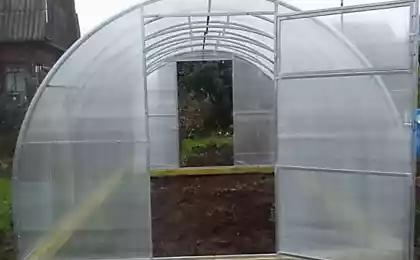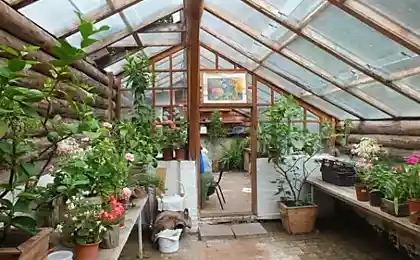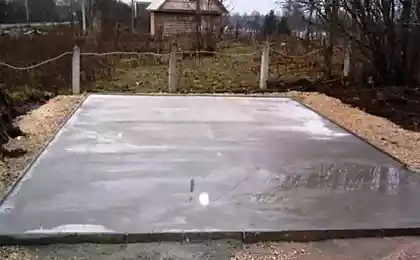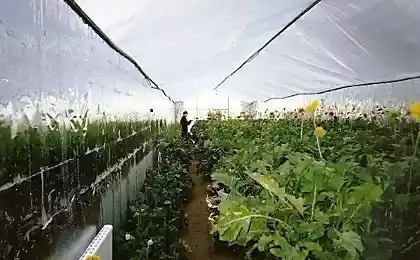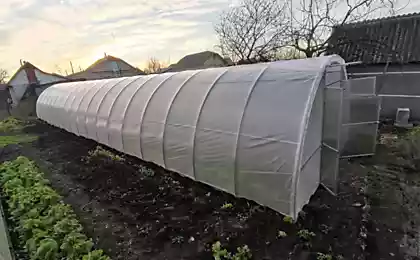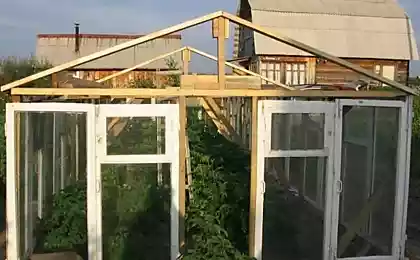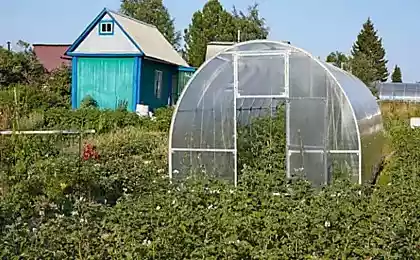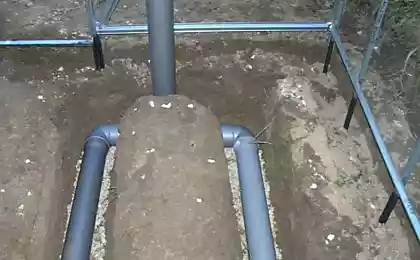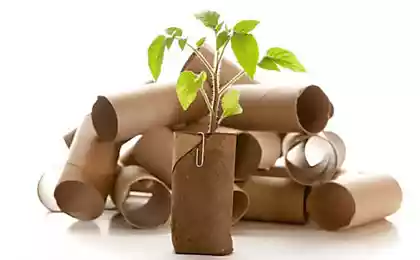577
How to build a greenhouse in your garden
For starters, you need to plan your greenhouse project. Construction of a greenhouse should not be expensive or long. The final choice of type of a greenhouse depend on the desired square, home architecture, available costs. But above all, the greenhouse must provide the proper conditions for growing plants. It should be located where they get maximum sunlight.
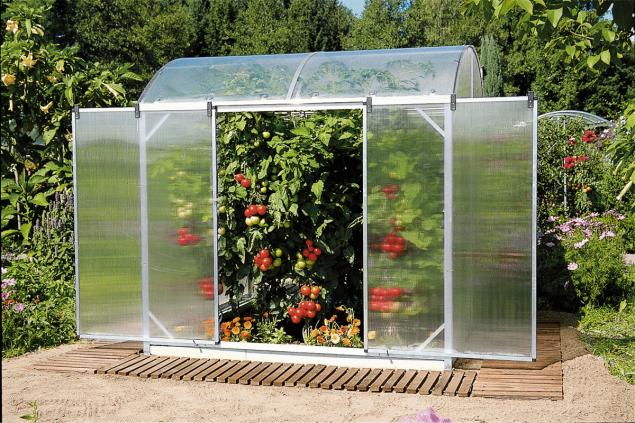
Advantage give ground on the South or South-East. Sunlight during the day, fine, but morning sunlight on the East side is sufficient for plants. Morning sunlight is most desirable: plant growth will be maximized. North is the least desirable place is good only for plants that require little light. Good drainage is another requirement for greenhouses.
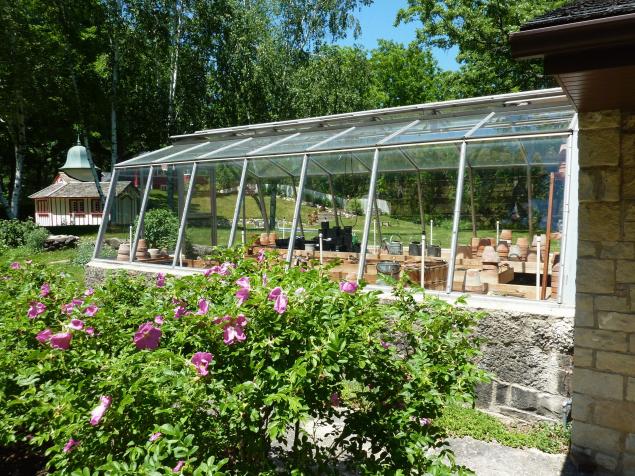
Access to the greenhouse should be convenient for you. There are many options greenhouses: it can be attached to the house or garage or it can be a freestanding structure.When building attached to the house greenhouse, keep in mind that snow, ice, or heavy rain might slide off the roof or into the structure. Freestanding greenhouse would get more sun and can be as large or small as desired.
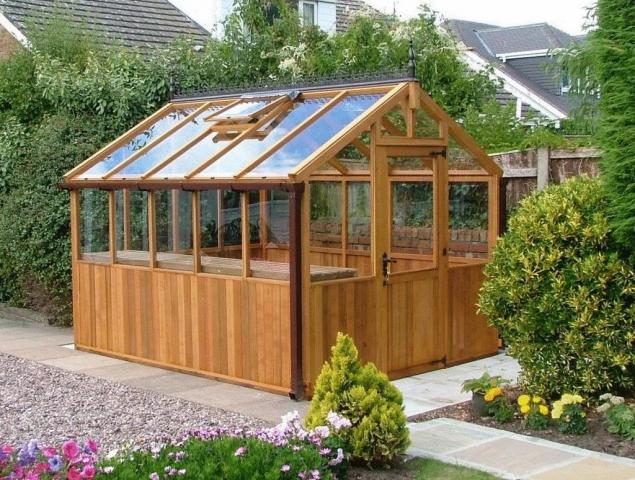
There is a large selection of greenhouse frames and finishing materials. The frames are made from wood, galvanized steel or aluminum. Plastic materials typically do not meet the requirements for snow load and wind. Frames can be covered with glass, rigid fiberglass or plastic film. They all have their advantages and disadvantages. Each of these materials should be considered to look at the prices. Greenhouse frames range from simple to complex, depending on the imagination of designers and engineers.
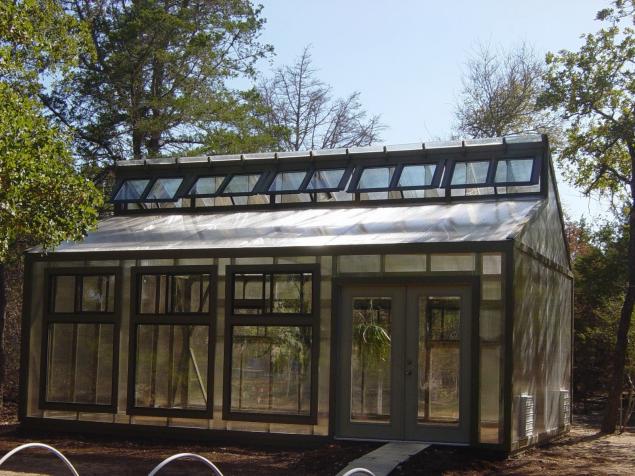
Conventional greenhouse with a gable roof and side walls provides maximum interior space and air circulation. A good Foundation is needed to support lateral loads on the side walls. Greenhouse coverings are made of durable glass, fiberglass, rigid plastic double-walled polymer films from 1 — to 3-year service life. Choose the right thing. Glass. Glass is the traditional covering. It has a nice appearance, inexpensive to maintain and has high degree of wear resistance.

Aluminum frame with a glass covering provides a weathertight structure that minimizes heat costs and retains humidity. Glass is available in many forms, which would be suitable with almost any style of architecture. Tempered glass is often used, because two or three times stronger than ordinary glass. Small prefabricated glass greenhouses are available for installation with your own hands. About the shortcomings of glass breaks easily, expensive initially, and requires a frame design, unlike fiberglass or plastic.Requires a good base of the frame should be strong and well fitted to support heavy, rigid glass. Fiberglass is light, durable. Use only transparent or translucent for greenhouse construction. good fiber is from 15 to 20 years. The resin coating of the optical fiber gradually wears out, allowing dirt to keep the open fibers. A new coating is required after 10 to 15 years.
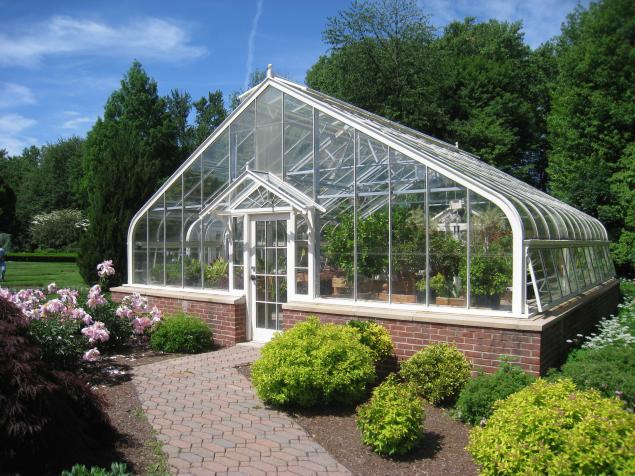
Double wall plastic. Rigid double-layer plastic sheets of acrylic or polycarbonate are available to give long service life, heat-saving covers. The double-layer material retains more heat, therefore saving energy by 30 percent. Both materials are guaranteed for 10 years. Both can be used on curved surfaces; the polycarbonate can be bent to the greatest extent. As a rule, each layer reduces light by about 10 percent. About 80 percent of light filters through double-layer plastic, compared with 90 percent for glass.
Coating of film is available in several types and quality of several different materials. Construction costs are much lower, as the frame can be lighter and plastic film is inexpensive. The light film of plastic coverings is comparable to glass. Films of polyethylene (PE), polyvinyl chloride (PVC), copolymers and other materials. A utility grade of PE that will serve about a year available at local hardware stores.
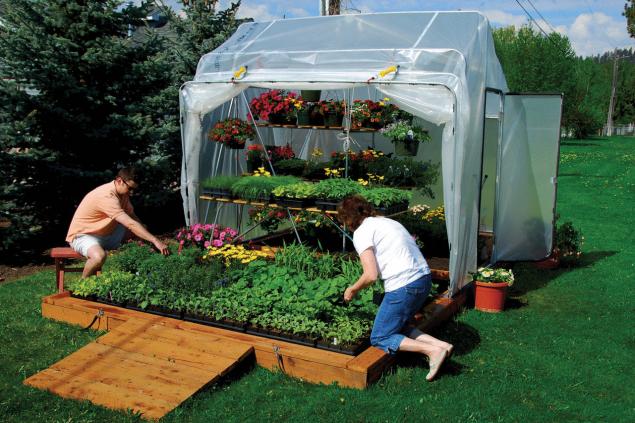
Most home greenhouses require a concrete Foundation, similar to the residential house. Permanent flooring is not recommended because it may stay wet and slippery from soil. track for easy access to plants can be constructed from concrete, gravel, or stone. Greenhouses provide a shelter in which is supported a suitable environment for plants. Solar energy from the sun provides sunlight and some heat, but you have to provide a system for environmental control in the greenhouse. This is done by using heaters, fans, thermostats and other equipment. The choice of heating system and fuel depends on availability, cost and individual choice.
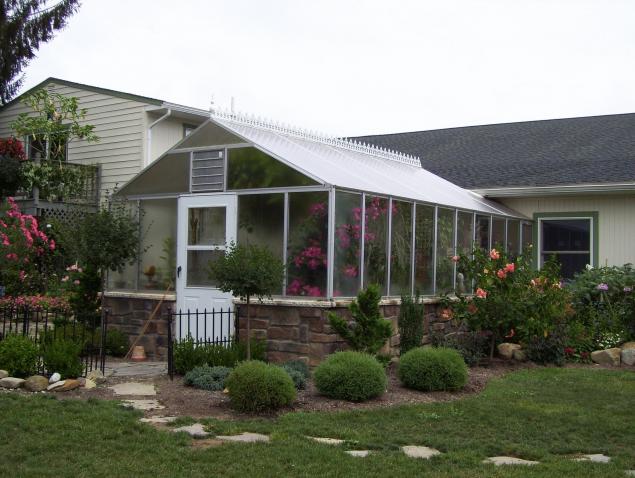
Installation of fans in your greenhouse is a good investment. In winter, when the greenhouse is heated, it is necessary to maintain air circulation so that the temperature establishmentarians throughout the greenhouse. Without air mixing fans, the warm air rises and cool air settles around the plants on the floor.
Ventilation is the exchange of inside air and outside air to control temperature, remove moisture. Natural ventilation uses vents on the roof at the ridge line from the input side vents (louvers). Ventilation requirements vary depending on the weather and time of year.
Source: /users/1077

Advantage give ground on the South or South-East. Sunlight during the day, fine, but morning sunlight on the East side is sufficient for plants. Morning sunlight is most desirable: plant growth will be maximized. North is the least desirable place is good only for plants that require little light. Good drainage is another requirement for greenhouses.

Access to the greenhouse should be convenient for you. There are many options greenhouses: it can be attached to the house or garage or it can be a freestanding structure.When building attached to the house greenhouse, keep in mind that snow, ice, or heavy rain might slide off the roof or into the structure. Freestanding greenhouse would get more sun and can be as large or small as desired.

There is a large selection of greenhouse frames and finishing materials. The frames are made from wood, galvanized steel or aluminum. Plastic materials typically do not meet the requirements for snow load and wind. Frames can be covered with glass, rigid fiberglass or plastic film. They all have their advantages and disadvantages. Each of these materials should be considered to look at the prices. Greenhouse frames range from simple to complex, depending on the imagination of designers and engineers.

Conventional greenhouse with a gable roof and side walls provides maximum interior space and air circulation. A good Foundation is needed to support lateral loads on the side walls. Greenhouse coverings are made of durable glass, fiberglass, rigid plastic double-walled polymer films from 1 — to 3-year service life. Choose the right thing. Glass. Glass is the traditional covering. It has a nice appearance, inexpensive to maintain and has high degree of wear resistance.

Aluminum frame with a glass covering provides a weathertight structure that minimizes heat costs and retains humidity. Glass is available in many forms, which would be suitable with almost any style of architecture. Tempered glass is often used, because two or three times stronger than ordinary glass. Small prefabricated glass greenhouses are available for installation with your own hands. About the shortcomings of glass breaks easily, expensive initially, and requires a frame design, unlike fiberglass or plastic.Requires a good base of the frame should be strong and well fitted to support heavy, rigid glass. Fiberglass is light, durable. Use only transparent or translucent for greenhouse construction. good fiber is from 15 to 20 years. The resin coating of the optical fiber gradually wears out, allowing dirt to keep the open fibers. A new coating is required after 10 to 15 years.

Double wall plastic. Rigid double-layer plastic sheets of acrylic or polycarbonate are available to give long service life, heat-saving covers. The double-layer material retains more heat, therefore saving energy by 30 percent. Both materials are guaranteed for 10 years. Both can be used on curved surfaces; the polycarbonate can be bent to the greatest extent. As a rule, each layer reduces light by about 10 percent. About 80 percent of light filters through double-layer plastic, compared with 90 percent for glass.
Coating of film is available in several types and quality of several different materials. Construction costs are much lower, as the frame can be lighter and plastic film is inexpensive. The light film of plastic coverings is comparable to glass. Films of polyethylene (PE), polyvinyl chloride (PVC), copolymers and other materials. A utility grade of PE that will serve about a year available at local hardware stores.

Most home greenhouses require a concrete Foundation, similar to the residential house. Permanent flooring is not recommended because it may stay wet and slippery from soil. track for easy access to plants can be constructed from concrete, gravel, or stone. Greenhouses provide a shelter in which is supported a suitable environment for plants. Solar energy from the sun provides sunlight and some heat, but you have to provide a system for environmental control in the greenhouse. This is done by using heaters, fans, thermostats and other equipment. The choice of heating system and fuel depends on availability, cost and individual choice.

Installation of fans in your greenhouse is a good investment. In winter, when the greenhouse is heated, it is necessary to maintain air circulation so that the temperature establishmentarians throughout the greenhouse. Without air mixing fans, the warm air rises and cool air settles around the plants on the floor.
Ventilation is the exchange of inside air and outside air to control temperature, remove moisture. Natural ventilation uses vents on the roof at the ridge line from the input side vents (louvers). Ventilation requirements vary depending on the weather and time of year.
Source: /users/1077

